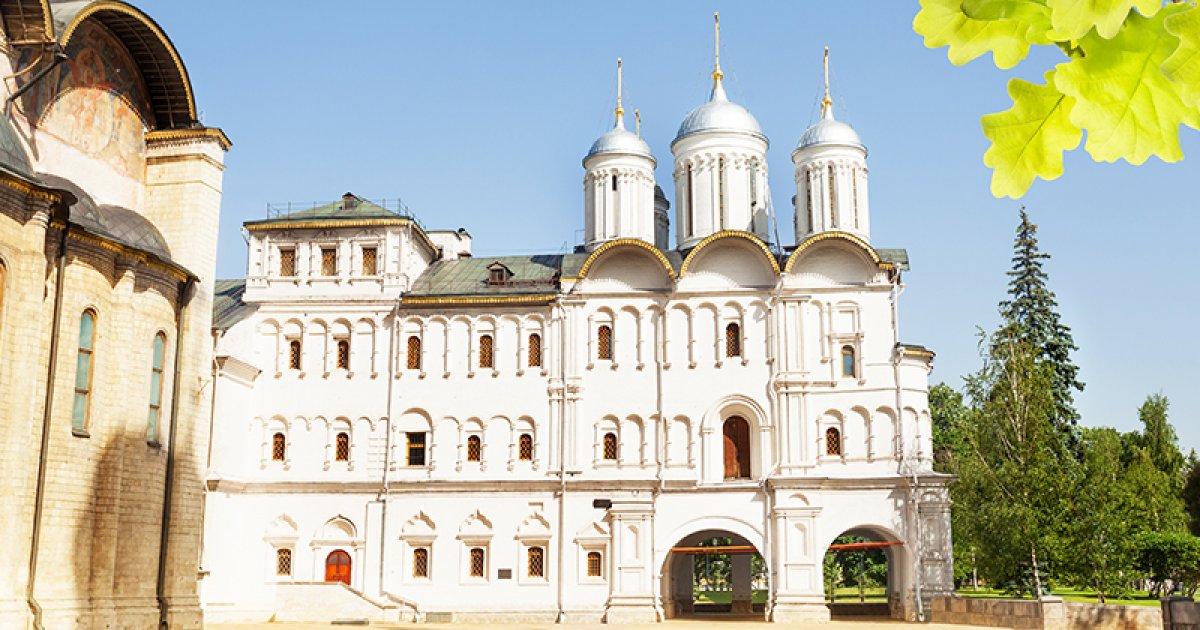KREMLIN, Patriarch's Palace
 Language: English / USA
Language: English / USA
The Patriarch's Palace and the adjoining Church of the Twelve Apostles form a single complex that was the seat of the court of the Russian Orthodox Church Patriarchs for a long period during the height of the Church's power in the 17th century.
The earliest buildings of the palace date back to the 15th century, but being wooden structures, they were destroyed in fires. The current palace was erected around 1655 when Patriarch Nikon had different spaces built to provide living quarters, offices, warehouses, laboratories and other premises.
Inside there is a splendid collection of various 17th century objects such as jewelry, watches, furniture and precious embroideries.
The most important room of the entire palace, around which the complex is built, is the Cross Chamber or the Myrrh Chamber
Now pause and press play again when you get there.
The 280-square-meter room with high vaulted ceilings was used to host important ceremonies, councils, receptions and feasts.
But from 1763, the room took on an even more sacred role and became the Myrrh Chamber. Take a look at the large oven topped with a baldachin placed in the center of the room: this is where miro, the holy oil used during sacraments, was prepared once every three years using 50 different essences.
The enormous urns used to make it are still kept here, and since 1963 various objects from the Armory and the Kremlin Cathedrals and others that belonged to the Patriarchs who lived in this building are on display.
Now pause and press play again when you reach the Church of the Twelve Apostles.
This beautiful church, distinguished by its 5 beautiful domes, was a private space reserved for the Patriarchs. It was embellished by a remarkable, ornately decorated wooden wall, which unfortunately has not been preserved, but has been replaced by another from the nearby Cathedral of the Ascension, dating from the 1700s. In the church you’ll find various precious icons and Russian masterpieces from the 1600s, many of which were made in the Kremlin workshops.
An interesting fact: One of the ingredients of the miro I was just telling you about is myrrh, a substance that humans have been using for more than 5000 years: in ancient Egypt for embalming, in Christianity for sacraments, in ancient Greece for infusing wine, and it’s still used today in perfumes and even disinfectants!



